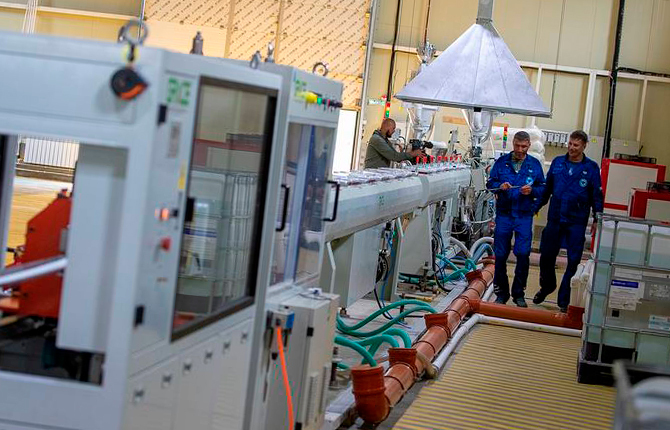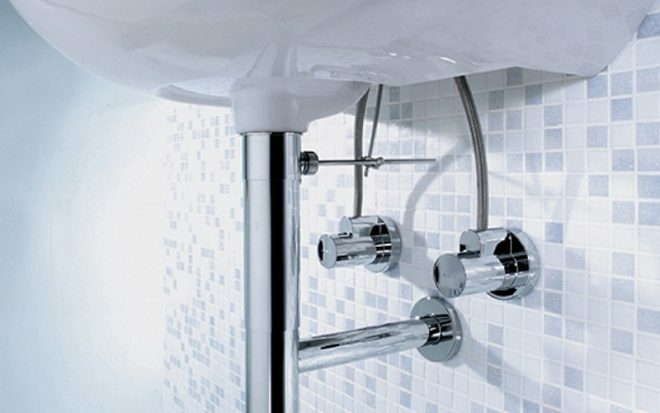- We choose the material
- How not to be mistaken in the choice - shape and dimensions
- Preparatory processes - selection of the type of attachment of the sink, preparation of the instrument, dismantling
- Works on the installation of a sink - a sequence of works
Corner kitchen sink is a great way to save a lot of useful centimeters of the work surface. The arrangement of the sink in the corner is a practical and ergonomic solution, convenient for most housewives. It is especially important in case your kitchen is decorated with the L-shaped headset. But in style there are no restrictions - kitchen sinks are made of both artificial stone and stainless steel (other materials are also used), so that it will not be necessary to combine the required textures and colors labor.
We choose the material
The most common kitchen sinks are made of stainless steel. Stainless steel makes them simple to care for, universal in terms of style and affordable - in terms of cost.
Stylish and quality ceramic basins are considered, but the price is quite high. Such washes can be made from:
- Kaolin;
- Faience (refractory clay).
The quality of such products will be higher than that of stainless steel sinks, because ceramic sinks are characterized by:
- Resistant to mechanical damage;
- Stability of color;
- Durability;
- Attractive and interesting design.
No less popular are models from artificial stone, composite materials - silakril, Koriana. Their main advantages are ecological compatibility, durability and attractiveness.
.But for designer expensive kitchens, sinks are often made of natural stone (granite or marble).
They are easy to care for and luxuriously look, but their price is several times higher than that of a similar stainless steel construction (12-50 thousand) rub.).
Kitchen sinks with enameled surfaces can now be referred to retro style. Because presentable gloss these coatings lose very quickly. In addition, the enamel is subject to mechanical damage and is very difficult to recover.
Advice! For a classic style, a ceramic sink is suitable, and kitchen sinks made of stainless steel will perfectly fit into a modern interior. High-tech design will receive a logical addition in the form of an artificial stone product.
How not to be mistaken in the choice - shape and dimensions
Choosing the dimensions of the shell, you should proceed from the considerations of ergonomics and from what cabinet is installed in the kitchen. A small sink will be appropriate only in a small kitchen with a small curbstone.
The most convenient shell, according to experts, is rectangular. So, any most ordinary shell can be placed in a corner if the headset has a five-edged corner cabinet 90x90 cm. In general, the most convenient working area is the angle, if there is a module with five faces under the table top. The next photo shows the difference.
There are also square, triangular, oval bowls, but they often act only as an element of a bowl consisting of two bowls.
Combined sinks of this type are often used where there is a need to save space - one part can be used for dishes, and the second - for vegetables, fruits, defrosting food, which is very conveniently. And the shape of the cup must necessarily correspond to the general style.
Advice! Well, when the product is completed and the wing for drying dishes.
An important factor of choice - this is the size, including depth. After all, if the sink is too deep, then when you wash it will have to constantly bend over. Too small, small model is also inconvenient - when washing dishes from it, spray will scatter in all directions, leaving spots on the furniture and countertop. The optimum size here is 20 cm.
Preparatory processes - selection of the type of attachment of the sink, preparation of the instrument, dismantling
Angle (and not only) kitchen sinks are classified by type of installation:
- Mortise (are heated in the countertop);
- A waybill (a support for it is a curbstone);
- Podstolnaya (use special mounts for mounting under the countertop).
Have you chosen the type of shell? Now you need to pick up a tool that allows you to make your own installation and connection, and the relevant materials. Here you will need:
- A curbstone;
- Actually a sink, the dimensions of which correspond to the size of the substratum, and the mixer;
- Electric jigsaw - in case the sink is mortise, it is necessary to make a hole in the countertop under it;
- Corners, self-tapping screws for additional fixing of the sink;
- Plumbing tools, including a gas key;
- Pipes (most often plastic);
- Corrugated hose;
- Blanket made of strong and durable rubber;
- Rubber seals required during installation of pipes and mixer;
- Siphon.
The process of dismantling one's own hands will not take much time. To do this, close the water supply - hot and cold, then remove the old plumbing.
This is recommended in the following order:
- Remove the mixer;
- Turn off the corrugation (the pipe through which the drain passes);
- Disconnect the sink;
- Remove the installed mounting brackets.
Works on the installation of a sink - a sequence of works
At the first stage, the location of the shell is determined. Regardless of whether a large sink is planned to be installed either small, stainless or made of artificial stone, mortise or waybill - it should be mounted as close as possible to the place where the old structure was standing. This will save you from having to make long communication paths.
If such works are still necessary, it is easiest to assemble a new water pipe from plastic pipes. To make the construction reliable, use rubber seals and a special foil tape during operation.
Plastic pipes are easily connected to old threaded connections.
Advice! If there is a need to lay communications on the kitchen wall, then hide the pipes behind the decorative box.
It is not difficult to assemble and install kitchen plumbing. Installing the corner wash, in fact, does not differ from the installation of a conventional sink.
- Use a corrugated hose to drain water from a new shell into an old sewer pipe. Initially, it is fed to the sink of the sink and then discharged through the hole in the back wall of the cabinet and connected to the sewer pipe. At the junction, a rubber sealant is always used, allowing the pipes to fit tightly to each other.
- The hose under the sink is connected with a siphon - this will allow the pipes not to be clogged with debris.
- After installing the water pipe, the installation of the sink begins. Theoretically, it can be attached to the wall on brackets, but such a hanging method is more suitable for a bathroom. Most often, a stainless (ceramic, stone) sink is installed on the curbstone or countertop, which serves as a base. If the mortise is used, then without the appropriate furniture with a solid tabletop can not do.
- The cabinet with the installed sink must be fixed - to the floor or walls.
- Begin the installation of sanitary ware from the installation of the mixer. It can differ in design and be attached to different bases. Such a "support" can be a wall and a sink (stainless or made of artificial stone). The mixer on the wall is mounted strictly horizontally, according to the level. To adjust its position use the supplied eccentrics.
- Upon completion of all work, you need to check the water and sewer connections - if you were able to collect everything correctly, then no leakage with open mixers would arise.
. Loading...
Read also:
- . Installation of kitchen sink - instructions, tips, video.
- . Choose a kitchen sink in 5 simple steps.
- . All about the size of the kitchen sink.
- . How to choose a faucet for the kitchen.
- . Features of self-assembly kitchen corner set.
- . Repair the kitchen faucet with your own hands.
- . Kitchen sink made of artificial stone - 8 tips for choice.


